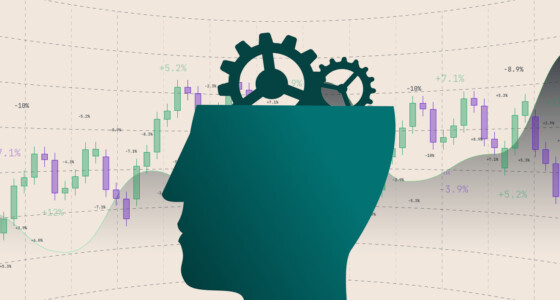

One thing you will need before beginning your trading journey is some necessary accounts, including a Demat and trading accounts. So, what is the difference between these two, or probably you thought they were the same and one means the other? Let us explore below to see how these two differ from each other.
What is a Demat Account?
When trading in the share market began in ancient times, investors and traders could have their securities kept in a material form or physical form in trading offices. This was cumbersome and also insecure, and unsafe. Dematerialization, or the invention of the Demat account in the early 1990s, led to storing these securities in an electronic format.
A Demat account allows proper storage and tracking of stocks and all investments that traders make in a single place. The difference between a Demat and a physical share is that a Dematerialization ensures a quick transfer of securities and keeps all physical certificates free from forgery, loss, and damage.
What is a Trading Account?
A trading account is a type of account that an investor opens to invest in securities. Without this account, you cannot trade in the stock market in India or any other country. The account is unique to every user since it contains a unique number for trading. It links the trader’s bank and Demat accounts.
With this account, a trader can access several stock markets when trading and enjoy the benefit of diversity.
Differences between Demat and Trading Accounts
Maybe you could be asking, are the trading and Demat accounts the same? Not really, these two are different, and one cannot replace the other. See below the difference between a trading account and a Demat account.
1. Functionality
A Demat account holds shares in an electronic or Dematerialized format, while investors use a trading account to buy or sell shares in the stock market. So, you can always track the remaining shares in your Demat account after trading.
2. Nature
A trading account captures all transactions you make in the capital markets over a period, making it have the nature of a current bank account vs a Demat account which fundamentally holds your shares and reflects your prosperity over a single period.
3. Unique Numbers
While both trading and Demat accounts have numbers, each of these numbers is unique. The difference is where a Demat account number uniquely identifies the trader’s account vs the unique trading number in the trading account that an investor uses to trade in the stock market.
4. Key roles
When trading in the stock market, you need to be sure that your shares are safe-this is what the Demat account does since it tracks the remaining shares when you transact in the trading account.

Opening a Demat Account
These steps can help you when you want to open a Demat account:
- Do your research, then pick a depository participant (DP) that meets your needs and specifications. DP services are provided in India by banks, stockbrokers, and online investment platforms.
- Fill out the Demat account opening form on the official DP website. Add a nominee to your account and fil in the electronic Know Your Customer (E-KYC) details.
- Send in scanned copies of your KYC documents, which should include proof of your identity, address, bank account, and source of income.
- You must go through the “In-Person Verification” process, also known as IPV, after successfully submitting your forms and all necessary supporting documentation – kindly note that this is a mandatory step. The verification process can be done online, but if offline, the investor must physically be present at DP’s office.
- You then need to sign a contract with the DP, which includes an outline of the DP’s and the investor’s obligations and rights.
- The request for opening a Demat account will be approved following a thorough review of the forms and other completed forms by the DP.
- Finally, you (the investor) will receive a special Beneficial Owner Identification Number (BO-ID), which you can use to access your Demat account online.
Opening a Trading Account
Kindly follow the steps below.
1. Choose a brokerage firm
Choosing a brokerage company to open a trading account requires extensive research. Before choosing one, consider their various fees, the trading platform’s user interface, and the value-added services.
2. Fill the forms
Once you choose a broker that fits your needs, you must fill out the forms per the broker’s requirements, including the KYC form.
3. Submit the necessary documents
You must also provide documentation of your identity, place of residence, and in some cases, your income. Along with several other documents, a photocopy of an Aadhar card or passport can be used as proof of residence, and a copy of a PAN card or an Aadhar card can be used as proof of identity. Kindly note that a PAN card is compulsory to open a trading account.
4. Verification of documents
After receiving the documents, the brokerage will manually verify the KYC of the applicant. The verification of documents might be done manually or online. You can choose the e-KYC procedure if you don’t want to manually verify the documents.
Your PAN card needs to be connected to your bank account and Aadhar card for the e-KYC procedure. For the e-KYC procedure, the mobile number provided on the account opening form must match the Aadhar card.
5. Ready to trade
After about three or four working days, your trading account will be active and ready.
Fees
Brokers do not charge any fee when investors open a trading account. However, investors must pay the annual maintenance charge (AMC) and custodian fees when opening a Demat account. This amount is not standard as it varies from one brokerage firm to another.
However, some brokerages do not charge any fees when opening an account and waive off the AMC for the first year.
You can also use a single PAN to open multiple trading and Demat accounts after paying the necessary account maintenance charges.
Can you open a Demat account without having a Trading account or vice versa?
Depending on your trading needs, you can open a Demat or trading account. You can open a Demat account without the need to open a trading account if, for instance, you just want an account to track your shares after applying for an Initial Public Offer (IPOs). You must open a trading account to trade these shares in your Demat account.
However, you must have a Demat Account when it comes to trading in the form of equities.
Process flow of Demat and Trading Accounts
You must first fund your trading account with funds from NEFT, RTGS, or IMPS to have a margin available in your trading account for the purchase of shares.
Once you purchase the shares, the Demat account saves them in an electronic form the same way a savings bank account does. When you buy the shares, your respective depository participant credits them to your Demat account, and when you sell them, your Demat account is debited.
The purpose of a trading account is to serve as a reserve for the money you use in trading. Funds from your bank accounts must be transferred to a trading account to buy or sell securities. Shares that are not exchanged during the intraday trade are delivered to your trading account. When shares are purchased, your trading account is debited, and when securities are sold, the account is credited.
Role of Trading Account and Demat Account
Before or after opening a Demat or a trading account, you must have a thorough knowledge of how they both work in the share market. Note that you will need a Demat account to electronically store your securities, and a trading account is necessary to trade in the stock market.
When you have these two accounts, you can buy shares of any company of your choice. The shares will then be credited to your Demat account, and the money you used to buy the shares debited from your trading account.
Also, when selling the shares, they will be debited from your Demat account, and the funds will be credited to your trading account. Hence, it is necessary to have these two accounts to trade in the stock market.
General
What is the difference between Demat and a trading account? Understanding that will help you get a bigger picture of what happens in the stock market. These two accounts are crucial for you as a trader because you can track and differentiate every act that takes place in your shares and funds accounts.









